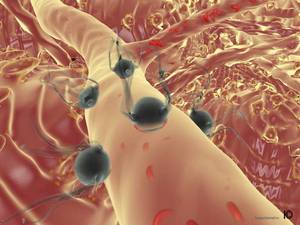This article is a small guide on how to use the most common antibiotics of penicillin group, which can be used by both children and adults.
Penicillins are the most popular antibiotics from Canadian Pharmacy. They have many modern derivatives: augmentin, amoxicillin, ampicillin, oxacillin and other antibiotics which names usually end with “-cillin”. These drugs are similar in their mechanism of action.
They differ in price, pharmaceutical form (syrup, pills, vials for injection), the spectrum of action (some penicillins are used against streptococci, others – against staphylococci), but the principle of their action is the same – they all affect bacteria but are useless against viruses.

History of antibiotics
Fleming discovered penicillin in 1928 when he found out that substance secreted by mold fungi kill staphylococci. In the 1940s, there was a widespread production of this substance, which was called by the name of the fungus – penicillin. But some archaeologists have found evidence that in the 15th century South American Indians used the same substance for treating their compatriots. So the real penicillin creator is unknown.
What is penicillin?
Penicillin is a chemical compound which is capable of disrupting bacterial wall synthesis during their reproduction period. The trick is that human cells do not have walls but do have a modest cell membrane. Therefore, theoretically, penicillins are not dangerous for people. They can help to overcome streptococcal or staphylococcal infection. Doctors prescribe antibiotics of penicillin group to adults and children with tonsillitis, otitis, bronchitis, sinusitis. Also, penicillin is very “dangerous” for meningococcus – starting with a runny nose, and ending in intensive care unit if not treated properly.
Antibiotics of penicillin group are called the “first-line drugs” – drugs that are recommended to be administered first of all when there is a preliminary diagnosis. If a patient does not feel better after three days, penicillins are replaced by the “second-line antibiotics” – tetracyclines, erythromycins and others. It is done because there is usually no time to wait for exact laboratory tests results, including bacterial cultivation. Moreover, modern penicillins have a broad spectrum of action and there is a high probability that they will help in this case.
However, there are people who do not like taking antibiotics, because these drugs may cause side effects.
Side effects of penicillins
- Diarrhea, vomiting or sickness are typically caused by a simple antibiotic irritant action on intestine and stomach mucous membrane. They usually disappear after the drug withdrawal. But you should inform your doctor about this, as this may be a new symptom. Your doctor may replace this antibiotic or advise to continue further treatment.
- Allergy – penicillin and its modern counterparts are well-known allergens. A person can experience ash, edema, joint pains, and fever. Here you need to understand what caused all these reactions – allergy to penicillin or another infection. Joint pains may be caused by allergy or intoxication – penicillin kills germs, but toxins they contain, get into the bloodstream and cause increased symptoms. What to do? Consult your doctor, only he will be able to correctly identify the cause of health deterioration.
- Dysbacteriosis. This is a complication of antibiotics therapy that causes the greatest fear among parents. But if you choose between dysbacteriosis and pneumonia or otitis risk, it is better to choose dysbacteriosis. It is much less dangerous, and you can deal with it after the treatment of pneumonia.
When are penicillins useless?
P eople have been fighting with bacteria for over 70 years. And they survived and learned to resist antibiotics. Such bacteria are called antibiotic-resistant and are found mostly in hospitals (e. g., pneumonia that occurred in the hospital even has its own name – “hospital pneumonia”). If you caught hospital-acquired infections, you will have to fight with it hard.
eople have been fighting with bacteria for over 70 years. And they survived and learned to resist antibiotics. Such bacteria are called antibiotic-resistant and are found mostly in hospitals (e. g., pneumonia that occurred in the hospital even has its own name – “hospital pneumonia”). If you caught hospital-acquired infections, you will have to fight with it hard.
But in general, all antibiotics are often useless in the treatment of viral infections.
It’s simple, as most of the infectious diseases of upper and lower respiratory tract (95% to be precise) are usually caused not by bacteria but by viruses. And they are completely indifferent to all antibiotics – because they do not have a cell wall, and cells are absent at all. And there are some bacteria that also have no cell walls, and they are also resistant to penicillin. An example of viral diseases: A.R.V.I. and influenza.
Indications for penicillin and its derivatives are simple. It is purulent infection with a well-known location, i. e., in a particular area. These are pneumonia, acute sinusitis, otitis and purulent tonsillitis.
In medicine, there is a well-known concept – empirical treatment. This is a treatment prescribed without analyzes. This is done when there is a danger that people caught something very dangerous and every hour counts. In such situations, there is no time to talk. It is necessary to do something.
It is important to remember: Antibiotics from My Canadian Pharmacy are not used for the treatment of a cold but only in the case of bacterial infections. Do not self-medicate but seek a qualified help!
Posted by Dr. Himanshu Singh

 English
English Deutsch
Deutsch Français
Français Italiano
Italiano Español
Español Svenska
Svenska Português
Português 日本人
日本人 Dansk
Dansk Norsk
Norsk Suomi
Suomi Czech
Czech


